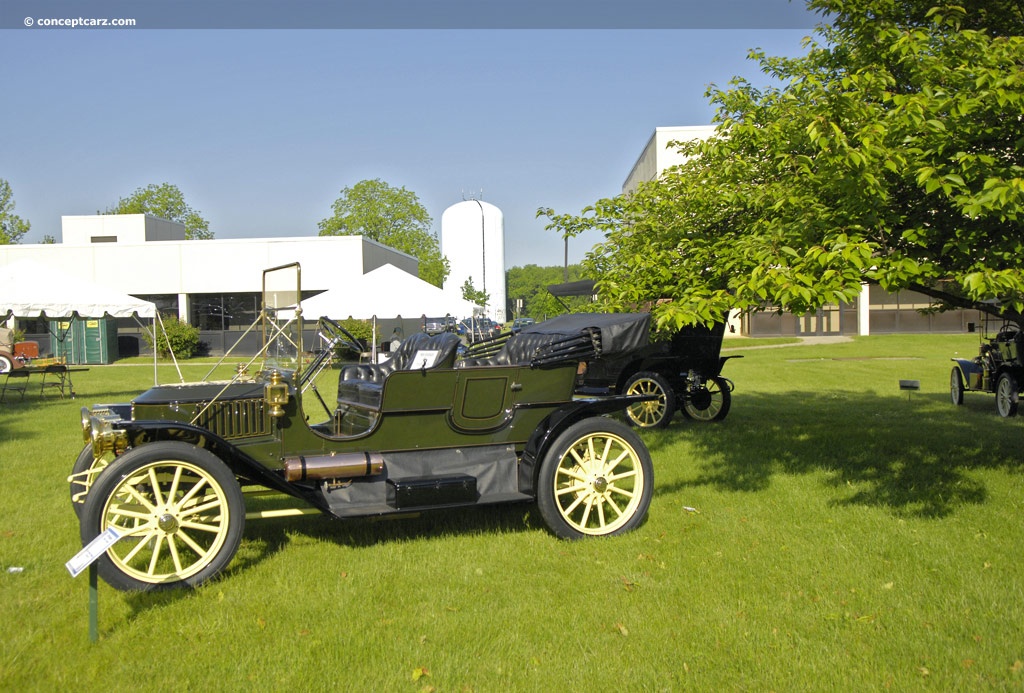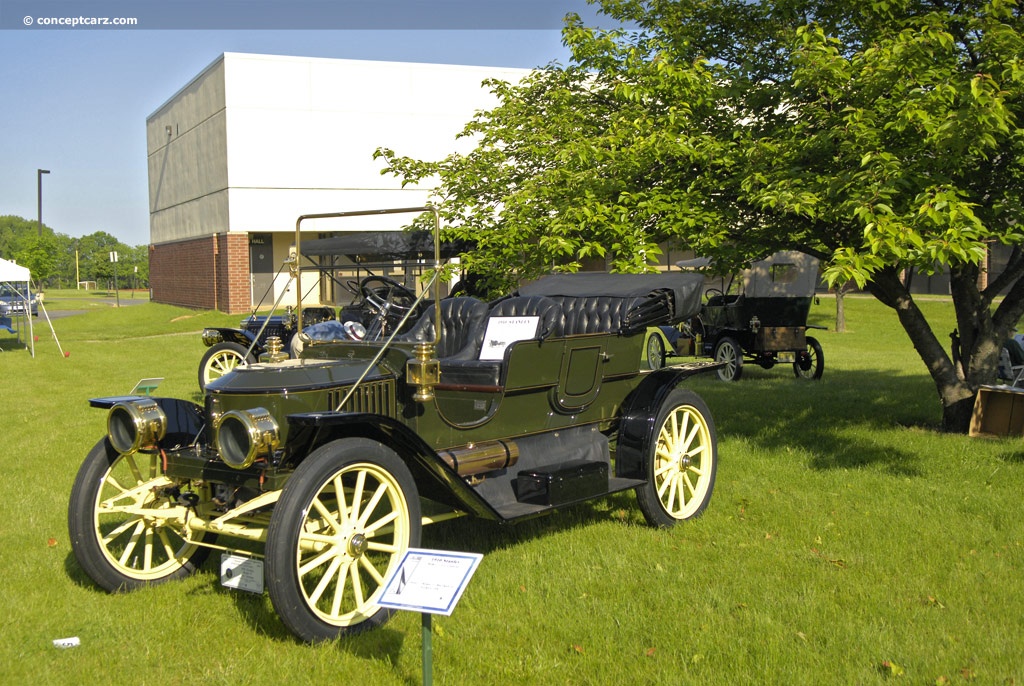The Stanley Motor Carriage Company produced steam-powered automobiles during the early 1900s. The automobile had just been created, and many individuals and companies were experimenting with a wide variety of fuel sources, such as gasoline, electricity, and steam. These three sources were the primary sources, each having benefits and limitations. The electric vehicles were limited in their range, but they were clean, quiet, and easy to start. The steam-powered vehicles were also clean and quiet, but they required a few minutes before starting to allow steam to form. The gasoline engine was noisy, dirty, and hard to start but showed the most potential. The advent of the electric starter around 1914 meant the demise of the other fuel sources. 
Toy Tonneau
View info and historyTwins Francis Edgar and Freelan O. Stanley were born in 1849. Francis passed away in 1918, and Freelan survived until 1940. Their first glimpse of business ingenuity was shown at an early age when they opened a photographic dry plate business which they eventually sold to Eastman Kodak. They became interested in the horseless carriage and, in 1897, created their first automobile. They eventually sold the rights to their design to Locomobile.The brothers produced steam-powered vehicles from 1902 through 1917, known as the Stanley Steamers. Throughout the years, the configuration of the vehicles, the complexity of the engines, and the mechanical components were all greatly improved. The cars were simple yet complex and rather ingenious. The frame was constructed of tubular steel and suspended by full-elliptic springs. Wooden bodies were built atop the frames with a boiler mounted beneath the seat. A petroleum burner, later replaced by kerosene, was placed underneath the vertical fire-tube boiler and generated the steam. Piano-wire was used to reinforce the enclosure. By using piano wire, a low overall weight was maintained while increasing the structural rigidity of the boiler. The vertical fire-tubes were made of copper and later replaced with welded steel. A thick chain was connected from the engine crankshaft to a rear-mounted differential. 
Toy Tonneau
View info and historyThe boilers were made safe by incorporating certain safety valves that could be used to release pressure. Even with these safety valves, there was still a concern about the boiler shell bursting. The boiler was made up of many joints, and in the cases of excessive pressure, these joints would fail and release that pressure, extinguishing the burner and subside the potential catastrophe. The name 'coffin bonnet' was coined when the broiler was moved to the front of the vehicle, creating an appearance similar to other cars of the era. By moving it to the front of the vehicle, the noise generated by the boiling steam slightly subsided for the passengers. By 1917 the Stanley brothers sold their company to Prescott Warren, who continued to build the steam-powered car until 1927. The demise of the company was slow but much anticipated. The automobile was rapidly evolving while the Steamer stagnated. Gasoline was inexpensive and reliable, and more importantly, cheap. Steam-powered cars sold for around $4000 while the Ford and Chevrolet, to name a few, were producing cars under $1000. Gasoline engines increased in size, capacity, and output while the steam cars hovered around 20 horsepower. 
Toy Tonneau
View info and historyOne of the most famous Steam-powered cars is the Stanley Rocket which captured a land speed record for steam at 127.7 mph at the Daytona Beach Road Course. Driven by Fred Marriott, he easily secured the Dewar International Trophy awarded to the vehicle with the fastest measured mile time, which he accomplished in just 28.5 seconds.The Stanley Rocket was designed to have limited drag. It was similar in shape to a canoe. It was long and narrow, 16 feet long and 3 feet wide at its widest point. Most of the car's components were housed within the body, which increased aerodynamics. The 3.1-liter engine was a twin-piston double-acting type capable of producing a reported 275 or 1000 psi at 700 degrees F. The entire vehicle weighed less than 1680 pounds.
by Daniel Vaughan | Mar 2006

Toy Tonneau
View info and history

Toy Tonneau
View info and history

Toy Tonneau
View info and history
by Daniel Vaughan | Mar 2006
Similarly Priced Vehicles
1910 Stanley Model 71 Vehicle Profiles
Recent Vehicle Additions
Performance and Specification Comparison
Price Comparison
$875 - $1,150
Related Automotive News

Seven storied Rolls-Royces celebrate 120 years at Salon Privé Concours
Rare, dramatic and beautiful, some of the worlds most important Rolls-Royces to gather at Blenheim Palace next month, including…
1911 RAC trials car responsible for Best Car in the World slogan
Hooper-bodied Silver Wraith Geneva Show car from...

The Cars That Established The Bentley Legend, Coming To Concours Of Elegance
Concours of Elegance 2019 will celebrate Bentleys Centenary in style, with a collection of the cars that established the Bentley legend
Bentleys reputation for racing excellence is exemplified by a display of the first Bentley to race at Le Mans,...

Brass and Classic Era Automobiles Set to Shine at RM's Annual Hershey Sale
RM Auctions returns to Hershey, Pennsylvania, October 10–11, for its well-established Hershey sale
Two-day auction presents more than 100 automobiles, with a focus on exceptional Brass and Classic Era motor cars
Coinciding with the popular AAC...

BMW TO BE FEATURED AT SARATOGA AUTOMOTIVE MUSEUM
BMW History and Heritage on four wheels and two on display from May – November, 2013
Woodcliff Lake, NJ – March 8, 2013… BMWs rich heritage will be showcased at the Saratoga Automobile Museum in an exhibition called BMW – The Ultimat...

FULL STEAM AHEAD FOR HISTORICS
Stanley Steamer takes centre stage for spring sale
Brooklands will provide the backdrop for the ultimate MPV – built long before the category was even invented – when a 1917 20hp Stanley Mountain Wagon crosses the block on Saturday March 9t...




























